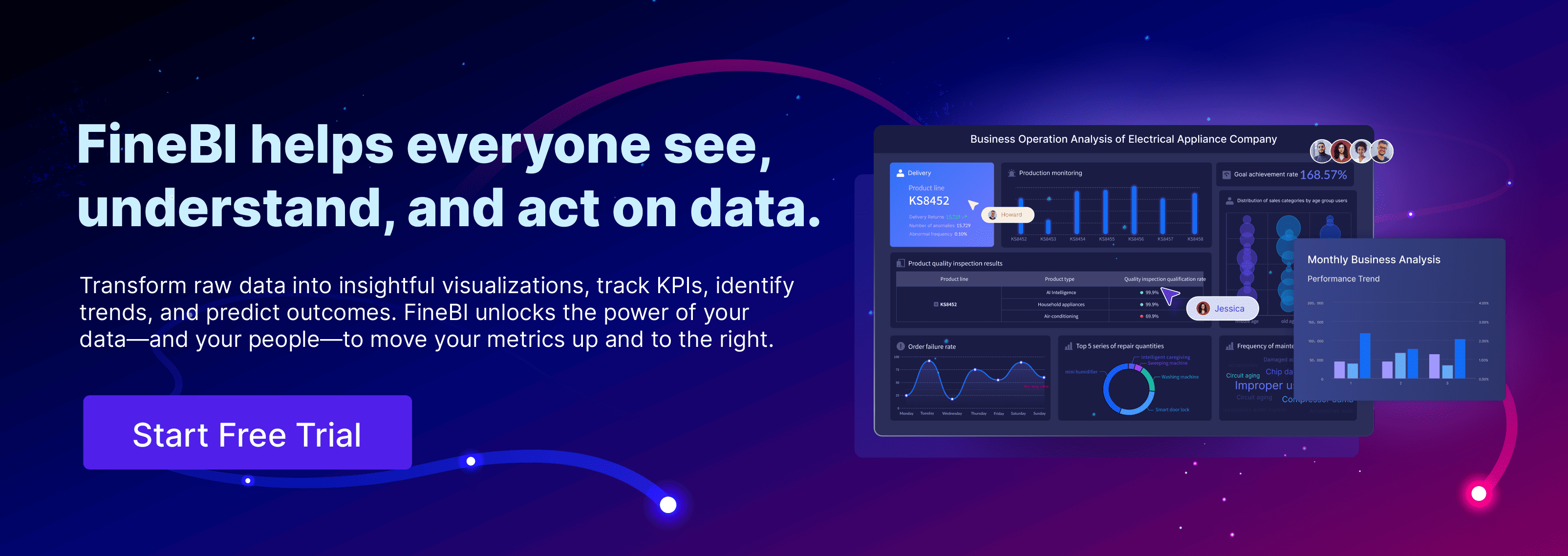Business data analytics has become essential for modern organizations. It drives success by improving decision-making, efficiency, and innovation. The global big data analytics market, valued at $307.52 billion, is projected to reach $924.39 billion by 2032, growing at a 13% CAGR. Around 91.9% of organizations have seen measurable value from their analytics investments. By 2025, 80% of governance efforts will focus on business outcomes. These trends prove that leveraging data today positions you for long-term success in a competitive world. Before reading the article, the demo may be of some help for a better understanding. Click here and you can book a demo of FineBI for free first.

Key Takeaways of Business Data Analytics
- Using business data analytics helps companies make better choices and work faster.
- Analytics shows how customers act, helping businesses give them special experiences and build loyalty.
- Combining AI with live data lets companies decide quicker and smarter, staying ahead of others.
- Sharing data across teams improves teamwork and helps workers make smart choices.
- Easy-to-use tools like FineBI make data simple for everyone to understand and use.
Understanding Business Data Analytics
What Is Business Data Analytics?
Business data analytics refers to the practice of examining and interpreting data to uncover actionable insights that drive smarter decisions. It involves using tools, techniques, and methodologies to analyze historical and real-time data, enabling organizations to identify patterns, trends, and opportunities. By leveraging business data analytics, you can transform raw data into meaningful information that supports strategic planning and operational improvements.
For example, companies like Netflix and Amazon use business data analytics to personalize user experiences and optimize inventory management. These practices not only enhance customer satisfaction but also improve operational efficiency. Whether you're in retail, healthcare, or manufacturing, business data analytics empowers you to make data-driven decisions that align with your goals.
Core Components of Data Analytics
To fully understand business data analytics, you need to explore its core components. These elements form the foundation of effective data analysis and contribute significantly to business performance:
- Descriptive Analytics: This component summarizes historical data to help you understand what has happened in the past. For instance, a retail company might use descriptive analytics to analyze sales trends over the last quarter.
- Inferential Analytics: This involves drawing conclusions and making predictions based on sample data. It allows you to forecast outcomes and guide strategies. Healthcare organizations, for example, use inferential analytics to predict patient outcomes and allocate resources efficiently.
- Hypothesis Testing: This method evaluates assumptions and determines the significance of relationships within data. It helps you validate strategies and make informed decisions.
| Component | Contribution to Business Performance |
|---|---|
| Descriptive Analytics | Summarizes data to understand key features, aiding in decision-making. |
| Inferential Analytics | Enables predictions and conclusions from sample data, guiding strategies. |
| Hypothesis Testing | Assesses assumptions and significance of data relationships, informing actions. |
By mastering these components, you can unlock the full potential of business analytics and apply it to various scenarios, from optimizing pricing strategies to improving patient care.
The Role of Business Analytics in Modern Organizations
Business analytics plays a pivotal role in helping organizations thrive in today's competitive landscape. It enables you to harness the power of data for better decision-making, operational efficiency, and customer engagement. Here are some ways business analytics drives success:
- Informed Decision-Making: Analytics provides you with data-driven insights, eliminating guesswork and enabling smarter choices. For example, a shipping company improved delivery times and reduced costs by tracking performance metrics and predicting trends.
- Enhanced Customer Understanding: By analyzing customer behavior, you can tailor products and services to meet their needs. Starbucks, for instance, uses purchase history to create personalized marketing campaigns, boosting engagement and loyalty.
- Operational Efficiency: Analytics identifies bottlenecks and optimizes processes, saving time and resources. Walmart adjusts product assortments based on regional preferences, improving customer satisfaction and inventory management.
- Competitive Advantage: Leveraging business analytics uncovers hidden opportunities and aligns strategies with market demands. Smaller businesses can remain competitive by being more responsive and data-driven.
- Risk Mitigation: Predictive modeling anticipates market changes and identifies potential risks, allowing you to act proactively.
| Company | Use of Data Analytics | Benefits |
|---|---|---|
| HSBC | Customer segmentation for tailored financial products | Enhanced customer satisfaction and resource efficiency. |
| Patagonia | Supply chain sustainability and environmental impact reduction | Improved sustainability practices and customer trust. |
| American Express | Machine learning for fraud detection | Increased security and consumer protection. |
| Big data for decision-making and predictive analytics | Enhanced user experience and operational efficiency. | |
| Goodyear | Predictive maintenance using digital twins | Improved product reliability and customer service. |
Modern organizations like Netflix and Google demonstrate how business analytics can revolutionize operations and drive innovation. By leveraging business analytics, you can stay ahead of the curve, anticipate challenges, and seize opportunities in real time.
Key Benefits of Business Data Analytics
Enhanced Decision-Making Through Data-Driven Insights
Business data analytics empowers you to make informed decisions by transforming raw data into actionable insights. Instead of relying on intuition, you can base your strategies on facts and patterns. This approach reduces uncertainty and enhances decision-making across all levels of your organization.
Did you know? Organizations that are highly data-driven are three times more likely to report significant improvements in decision-making, according to a PwC survey of over 1,000 senior executives.
Adopting data-driven decision-making can also lead to measurable financial benefits. Companies that leverage analytics effectively often see revenue increases ranging from 10% to 30%. For example, a global coffee brand used GIS technology to analyze local demographics and traffic patterns. This strategy helped them select optimal store locations, boosting sales and performance.
By integrating analytics into your decision-making process, you can identify opportunities, mitigate risks, and align your strategies with business goals. Whether you're optimizing marketing campaigns or streamlining supply chains, analytics ensures your decisions are backed by reliable insights.
Boosting Operational Efficiency and Productivity
Business analytics plays a crucial role in improving operational efficiency. By analyzing data, you can identify bottlenecks, streamline workflows, and allocate resources more effectively. This leads to higher productivity and cost savings.
Key performance metrics demonstrate how analytics enhances efficiency:
| Metric | Description |
|---|---|
| Gross Margin | Shows the difference between revenue and cost of goods sold, reflecting financial health. |
| Cash Management | Measures how efficiently cash flow and liquidity are managed. |
| Staff Utilization Rate | Indicates how effectively your workforce is utilized. |
| Employee Productivity | Assesses the output of employees relative to their input. |
| Overall Resource Utilization | Evaluates how well resources are used to achieve business objectives. |
For instance, analyzing employee productivity data can help you identify underperforming areas and implement targeted training programs. Similarly, monitoring cash management metrics ensures better liquidity and financial stability. By leveraging analytics, you can optimize every aspect of your operations, driving business growth and sustainability.
Gaining Competitive Advantage with Market Trends
Staying ahead in a competitive market requires a deep understanding of trends and consumer behavior. Business analytics enables you to analyze market data, predict future trends, and adapt your strategies accordingly. This proactive approach gives you a significant competitive advantage.
Tip: Real-time data analytics can improve operational efficiency by 25%, as highlighted in a 2023 McKinsey & Company report.
Predictive analytics allows you to anticipate market changes and align your offerings with consumer preferences. For example, 80% of consumers are more likely to purchase from brands that offer personalized experiences. By analyzing customer data, you can tailor your products and marketing campaigns to meet their needs, fostering loyalty and boosting sales.
Industries like finance and healthcare already leverage analytics to gain a competitive edge. Financial institutions use predictive insights to manage risks and optimize investments. Healthcare providers analyze patient data to improve care and reduce costs. By adopting analytics, you can position your organization as a leader in your industry.
Leveraging Customer Insights for Better Engagement
Understanding your customers is the key to building meaningful relationships and driving business success. By leveraging customer insights, you can create personalized experiences, improve engagement, and foster loyalty. These insights allow you to anticipate needs, address pain points, and uncover new opportunities for growth.
Why Customer Insights Matter
Customer insights provide a deeper understanding of your audience's preferences, behaviors, and expectations. They help you tailor your strategies to meet specific needs, ensuring your efforts resonate with your target market. Businesses that use these insights effectively often outperform their competitors in key areas such as sales growth, customer retention, and brand loyalty.
- Companies that integrate customer insights into product development achieve 85% higher sales growth compared to their peers.
- Marketers who use customer feedback to shape content strategies see 13 times higher ROI than those who don’t.
- Organizations that rely on data-driven decision-making are 23 times more likely to acquire new customers.
These statistics highlight the transformative power of customer insights in driving engagement and achieving a competitive advantage.
How to Leverage Customer Insights Effectively
To maximize the value of customer insights, you need to adopt a structured approach. Here are some actionable steps:
- Collect Data from Multiple Sources
Use surveys, social media analytics, purchase histories, and website interactions to gather comprehensive data. This multi-channel approach ensures you capture a complete picture of your audience. - Analyze Data with Predictive Analytics
Predictive analytics helps you identify trends and forecast future behaviors. For example, analyzing past purchase patterns can reveal opportunities to upsell or cross-sell products. - Personalize Customer Experiences
Use insights to create tailored marketing campaigns, product recommendations, and customer service interactions. Personalization not only improves engagement but also enhances customer retention. - Monitor and Adapt
Continuously track customer feedback and engagement metrics. Use this data to refine your strategies and stay aligned with evolving customer needs.
Real-World Applications of Customer Insights
Businesses across industries have successfully leveraged customer insights to improve engagement and retention. For instance:
- Retail: A global e-commerce company used predictive analytics to recommend products based on browsing history. This approach increased customer retention and boosted sales.
- Healthcare: Providers analyzed patient feedback to enhance services, improving customer satisfaction and loyalty.
- Finance: Banks used customer data to segment audiences and offer tailored financial products, resulting in higher retention rates.
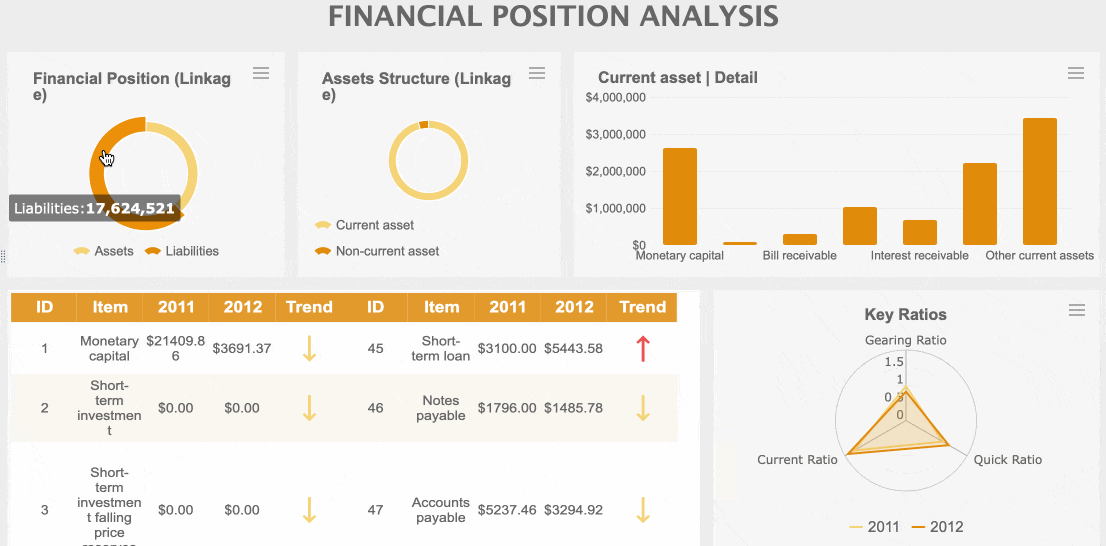
These examples demonstrate how actionable insights can unlock new opportunities and drive business growth.
The Role of Business Analytics in Customer Engagement
Business analytics plays a crucial role in transforming raw data into actionable insights. It enables you to identify patterns, predict behaviors, and make informed decisions. By integrating predictive analytics into your customer engagement strategies, you can anticipate needs and deliver value at every touchpoint. This proactive approach not only improves customer satisfaction but also strengthens long-term loyalty.
Tip: Businesses that prioritize customer retention often see higher profitability. Retaining an existing customer costs five times less than acquiring a new one.
By leveraging customer insights through business analytics, you can create a seamless and personalized experience that keeps your customers coming back. This strategy not only enhances engagement but also positions your organization for sustained success.
Implementing Business Data Analytics Effectively
Choosing the Right Tools Like FineBI
Selecting the right tools is critical for successful business analytics implementation. Tools like FineBI simplify data analysis and visualization, making them accessible to everyone in your organization. They empower you to process and analyze data independently, reducing reliance on IT teams. FineBI, for example, offers features like real-time insights, centralized data integration, and user-friendly dashboards.
When choosing analytics tools, consider the following best practices:
- Use predictable layouts and attractive colors to enhance dashboard engagement.
- Design dashboards for storytelling, ensuring they are inclusive and easy to navigate.
- Test data points carefully and use labels that highlight key business insights.
- Opt for tools that support seamless integration with existing systems, like FineBI, Tableau, or Power BI.
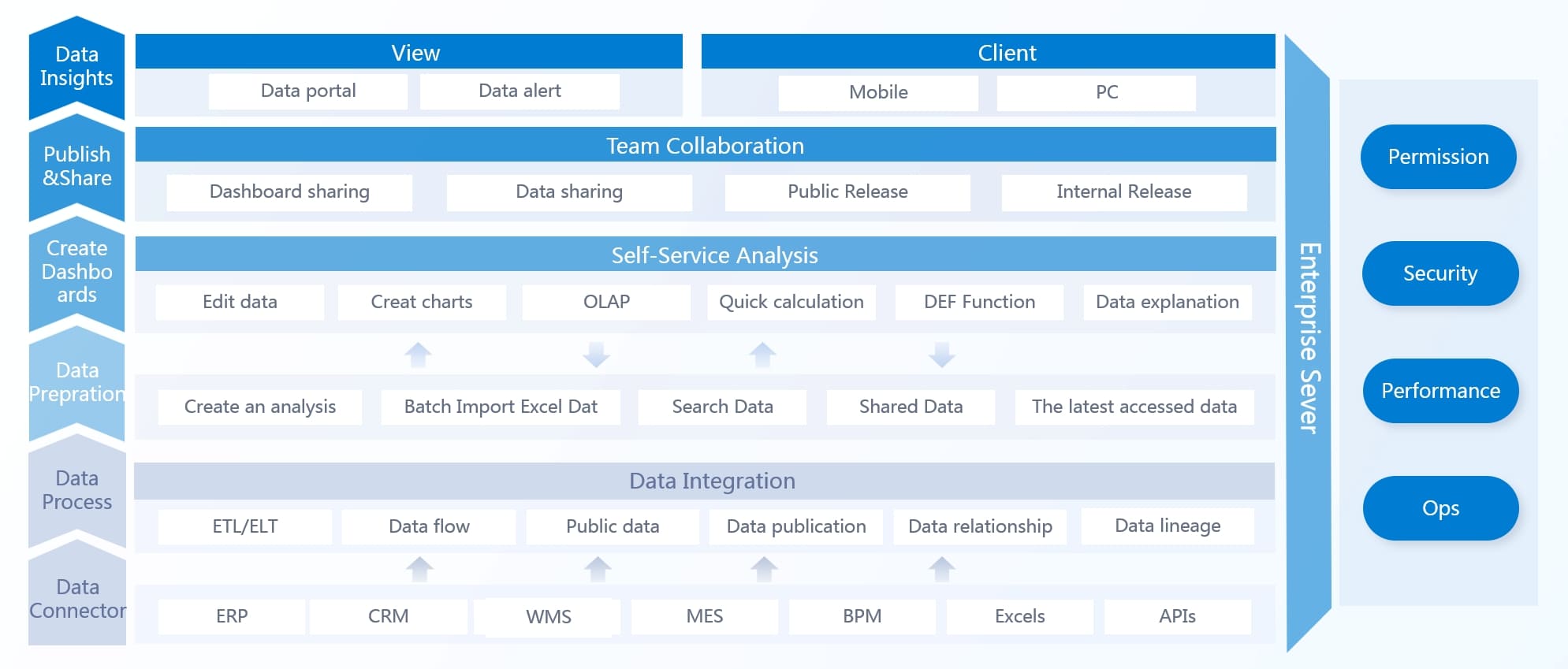
FineBI stands out with its self-service capabilities, enabling business users to explore data without technical expertise. Its intuitive interface and robust data integration make it an ideal choice for organizations aiming to adopt data-driven strategies.
Enhancing Reporting with FineReport
To complement business data analytics, many organizations pair FineBI with FineReport, FanRuan’s enterprise-level web reporting solution. FineReport offers:
Zero-code drag-and-drop design for building pixel-perfect reports and dashboards without programming skills.
Enterprise-grade performance, handling complex reports at scale through server-side rendering.
Advanced template management, including global search-and-replace and quick preview, which streamlines report updates.
Built-in scheduling and distribution, automating batch report generation and delivery.
Seamless integration with existing data sources and centralized governance, ensuring consistency.
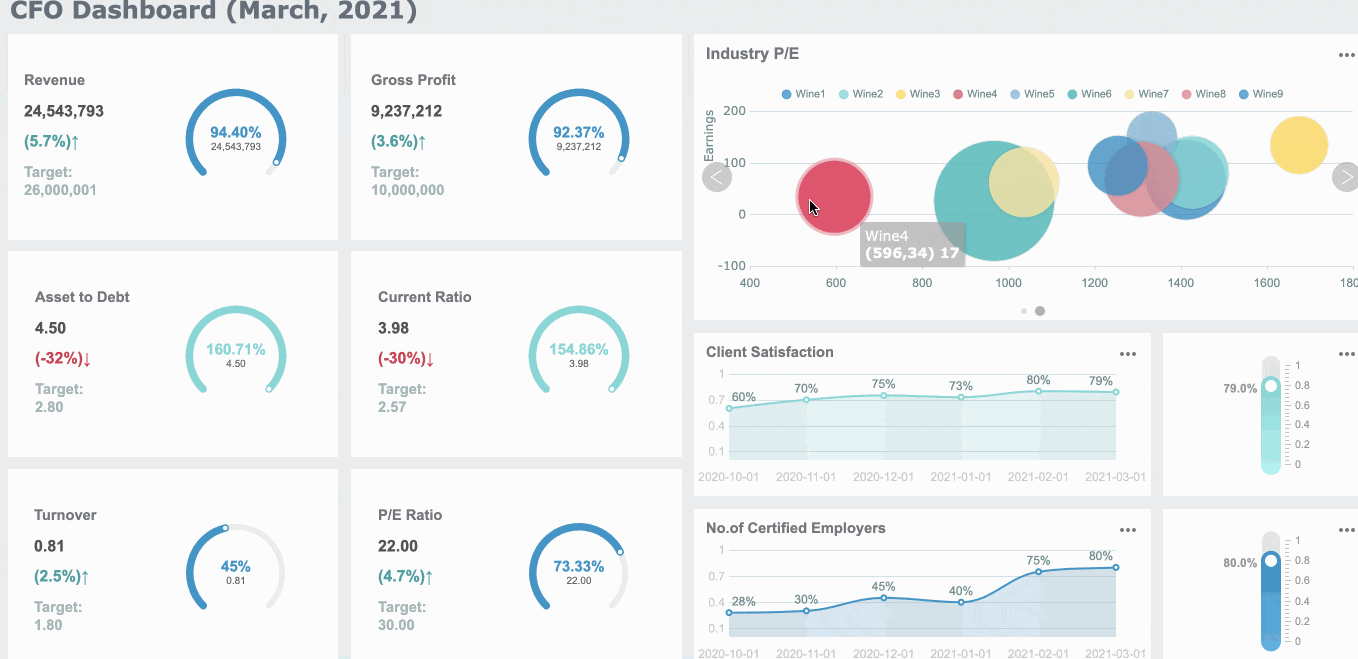
These features make FineReport a natural extension of your business data analytics strategy—delivering polished, shareable reports that amplify insights generated in FineBI.
Building a Data-Driven Culture Across Teams
Creating a data-driven culture requires collaboration and commitment across all levels of your organization. Start by fostering a mindset that values data as a strategic asset. Encourage teams to use analytics for decision-making and problem-solving.
Training programs tailored to different roles can help develop analytical skills. For instance, a nonprofit organization improved productivity by hosting monthly forums where departments shared data-backed results. This approach fostered peer learning and embedded data into their culture. Additionally, establishing a robust data governance framework ensures data quality and consistency, further supporting a data-driven environment.
Collaboration between IT, leadership, and other departments is essential. By working together, teams can leverage analytics to uncover insights, improve operations, and enhance customer engagement. A strong data-driven culture not only boosts efficiency but also positions your organization for long-term success.
Overcoming Challenges in Data Analytics Adoption
Adopting business analytics comes with challenges, but addressing them proactively can ensure a smoother transition. Common obstacles include productivity loss, duplication of content, and non-compliance with regulations. For example, analysts spend an average of 1.8 hours daily searching for data, leading to significant productivity losses.
| Challenge | Impact |
|---|---|
| Productivity Loss | Annual losses of $25 million due to time spent searching for data. |
| Duplication of Content | Wasted time and redundancy from creating duplicate reports. |
| Non-Compliance with Regulations | Operational risks, fines, and reputational damage. |
| Barriers to Data-Driven Enterprise | Poor adoption of tools and difficulties managing analytic assets hinder transformation. |
To overcome these challenges, invest in tools like FineBI that streamline data access and analysis. Provide training to ensure teams understand how to use analytics effectively. Regularly review and refine your data processes to maintain compliance and improve efficiency. By addressing these barriers, you can unlock the full potential of business analytics and drive meaningful results.
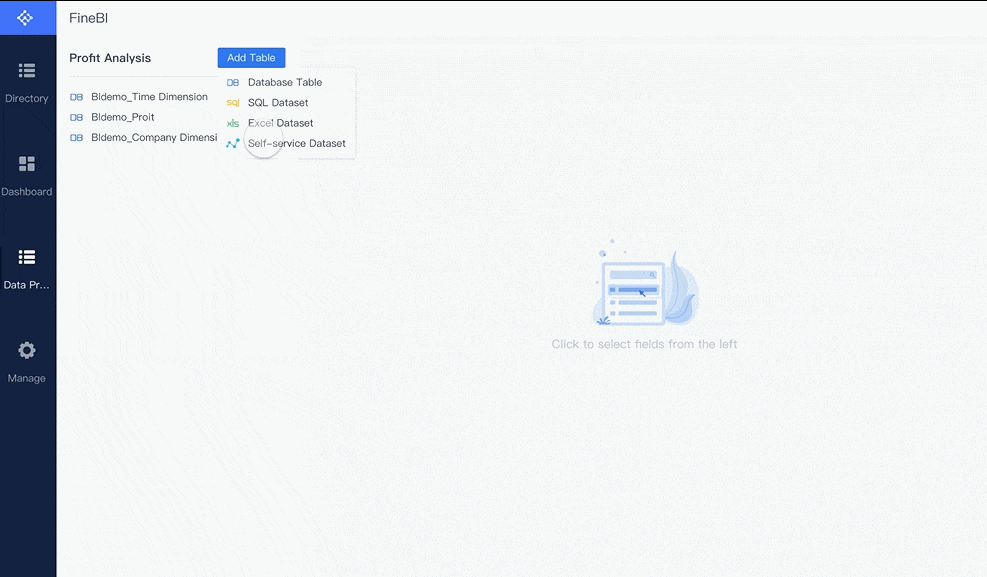
Integrating AI and Real-Time Analytics for Smarter Decisions
Integrating AI with real-time analytics transforms how you make decisions. AI processes vast amounts of data instantly, uncovering patterns and insights that would otherwise remain hidden. Real-time analytics ensures you act on these insights immediately, giving you a competitive edge in fast-changing environments.
AI-powered analytics tools analyze data streams as they occur. This capability allows you to respond to trends, customer behaviors, and operational changes without delay. For example, Amazon Go uses AI-driven computer vision and real-time data analysis to streamline the shopping experience. Customers can pick up items and leave the store without waiting in line, as the system automatically charges them for their purchases. This innovation not only enhances convenience but also improves operational efficiency.
Netflix demonstrates another powerful application of AI and real-time analytics. By analyzing user data in real time, Netflix delivers personalized content recommendations. This approach keeps users engaged and increases retention rates. Similarly, Uber employs AI algorithms to predict demand and adjust pricing dynamically. This ensures drivers and riders are matched efficiently, improving satisfaction for both parties.
The combination of AI and real-time analytics also helps you predict future outcomes. Predictive models analyze historical and current data to forecast trends. This allows you to make proactive decisions, whether you're managing inventory, optimizing marketing campaigns, or improving customer experiences. For instance, analyzing real-time data from sensors can help manufacturers prevent equipment failures, saving costs and avoiding downtime.
By integrating AI and real-time analytics into your operations, you can unlock smarter, faster, and more accurate decision-making. These technologies empower you to stay ahead of the competition, adapt to market changes, and deliver exceptional value to your customers.
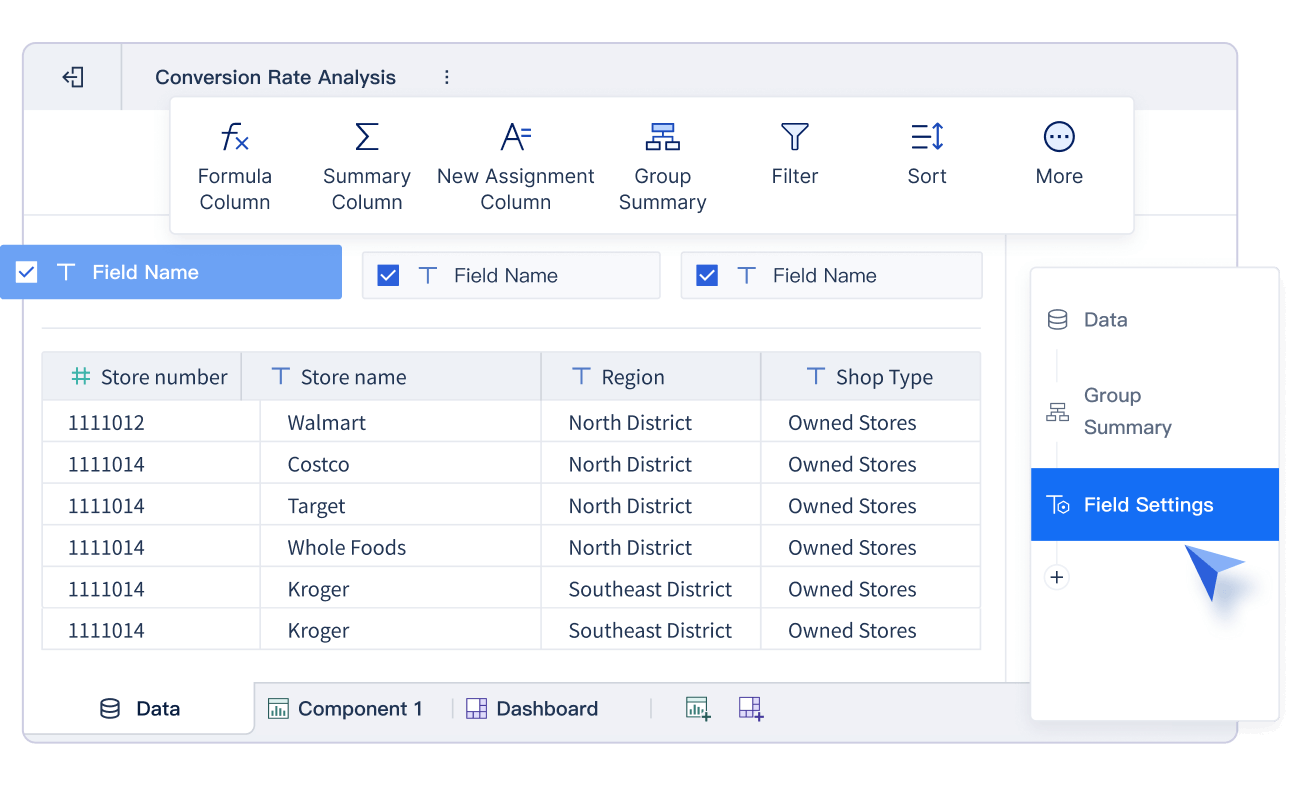
The Future of Business Data Analytics
Emerging Trends in Data Analytics for 2025
The landscape of business analytics is evolving rapidly, with several key trends shaping its future. By 2025, organizations will witness transformative advancements that redefine how data is analyzed and utilized. These trends include innovations in technology, visualization, and governance.
| Trend | Description |
|---|---|
| Quantum Computing | Offers unprecedented capabilities for solving complex optimization problems faster than classical methods. |
| AR/VR in Analytics | Transforms data visualization, making insights easier to understand and act upon. |
| Data Privacy and AI Governance | Emphasizes ethical usage and privacy compliance, fostering trust and transparency in data handling. |
| Democratization of Analytics | Empowers employees across departments to access and act on data insights independently. |
| Predictive and Prescriptive Analytics | Shifts businesses from reactive to proactive strategies, leveraging historical data for forecasting. |
| Real-Time Analytics | Essential for acting on insights instantly, using tools like streaming data processing and edge computing. |
These trends highlight the growing importance of accessibility, speed, and ethical considerations in analytics. For example, democratization of analytics allows employees without technical expertise to make data-driven decisions, fostering innovation across teams. Staying ahead of these trends will position your organization for success in a competitive market.
Real-Time Analytics and Its Impact on Decisions
Real-time analytics is revolutionizing decision-making by enabling businesses to act on insights instantly. This capability is critical in fast-paced industries where timing can determine success. Companies leveraging real-time analytics have reported measurable outcomes that underscore its value.
- Amazon's integration of customer data led to 35% of its total revenue from personalized recommendations.
- Companies investing in data capabilities see an average productivity increase of 8-10%.
- A mid-sized retail company experienced a 20% increase in sales within six months after adopting data-driven decision-making.
- Organizations using KPIs can increase profitability by up to 30%.
Real-time analytics empowers you to respond to market changes, optimize operations, and enhance customer experiences. For instance, predictive models can analyze live data streams to forecast demand, helping you adjust inventory or pricing strategies dynamically. By adopting real-time analytics, you can improve decision-making speed and gain a competitive edge.
Ethical Considerations and Data Privacy in Analytics
As analytics becomes more pervasive, ethical considerations and data privacy have taken center stage. Ensuring responsible data usage is not just a regulatory requirement but also a way to build trust with customers and stakeholders.
- Ethical data analysis prevents harm or unfairness to individuals or groups.
- Privacy practices like data anonymization and informed consent protect participant autonomy.
- Addressing bias and discrimination avoids perpetuating unfair conclusions.
- Transparency and reproducibility enhance trust and verification in findings.
Commitment to ethical analytics ensures your organization maintains integrity while leveraging data for insights. For example, implementing robust data governance frameworks can help you comply with privacy regulations and foster transparency. By prioritizing ethical considerations, you can safeguard your reputation and strengthen customer trust.
Business data analytics has become essential for organizations striving to excel in 2025 and beyond. It allows you to transform raw data into actionable insights, enabling smarter decisions and operational improvements. Tools like FineBI simplify data analysis, making it accessible to everyone in your organization. By leveraging data effectively, you can uncover opportunities, optimize processes, and stay ahead in a competitive market. Now is the time to embrace analytics and invest in tools that maximize the value of your data. Your future success depends on it.
Click the banner below to try FineBI for free and empower your enterprise to transform data into productivity!
Continue Reading about Business Data Analytics
Unveiling the Top 7 Big Data Analytics Tools for 2024
Top 10 Best Data Analysis Tools & Softwares You Should Know in 2024
The Vital Role of Data Analytics Dashboard in Business Decision-Making
FAQ
What is the difference between business intelligence and business analytics?
Business intelligence focuses on analyzing historical data to understand past performance. Business analytics, on the other hand, uses data to predict future trends and make proactive decisions. Both are essential for informed decision-making, but analytics emphasizes forecasting and strategy.
How can FineBI help my organization?
FineBI simplifies data analysis with self-service tools. It allows you to integrate data from multiple sources, create visual dashboards, and gain real-time insights. This empowers your team to make data-driven decisions without relying heavily on IT support.
Is business data analytics suitable for small businesses?
Yes, small businesses can benefit greatly from data analytics. It helps you understand customer behavior, optimize operations, and identify growth opportunities. Tools like FineBI are user-friendly and scalable, making them ideal for businesses of all sizes.
What skills do I need to use business analytics tools?
You don’t need advanced technical skills. Most tools, like FineBI, offer intuitive interfaces and drag-and-drop features. Basic knowledge of data interpretation and a willingness to explore insights are enough to get started.
How does real-time analytics improve decision-making?
Real-time analytics processes data instantly, allowing you to act on insights as they happen. This helps you respond quickly to market changes, customer needs, or operational issues, giving you a competitive edge in fast-paced environments.

The Author
Lewis
Senior Data Analyst at FanRuan
Related Articles

How to Build a Data Analysis Portfolio Step by Step
Build a data analysis portfolio from scratch with step-by-step guidance on choosing projects, platforms, and showcasing your skills to stand out.
Lewis
Nov 19, 2025

Understanding the Work of a Data Quality Analyst
A data quality analyst ensures data accuracy, consistency, and reliability by identifying, resolving, and monitoring data quality issues for business success.
Lewis
Nov 17, 2025

How Can Employee Retention Software Help Lower Turnover Rate
Employee retention software lowers turnover by tracking engagement, identifying risks, and supporting recognition to keep employees satisfied and loyal.
Lewis
Nov 16, 2025
